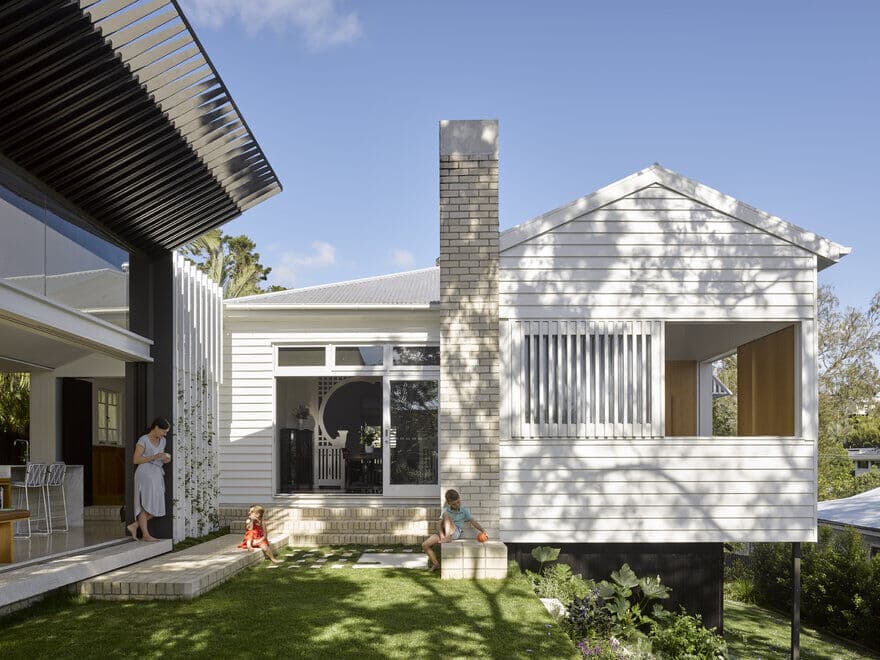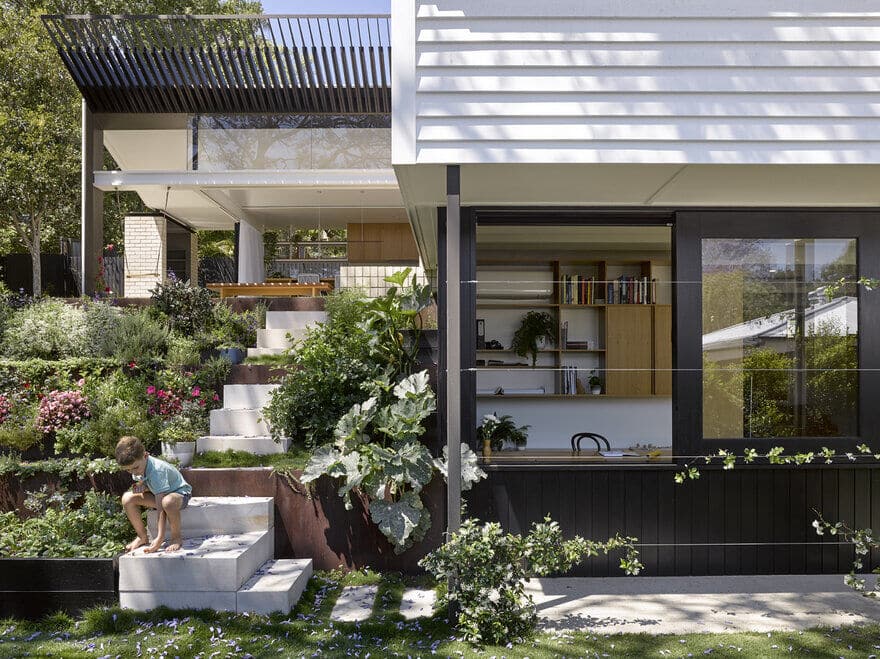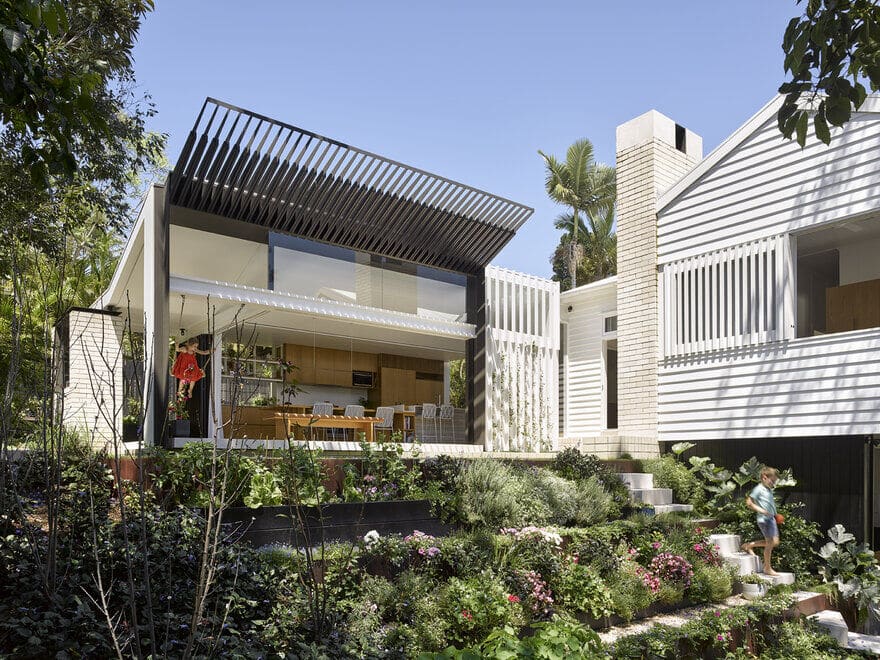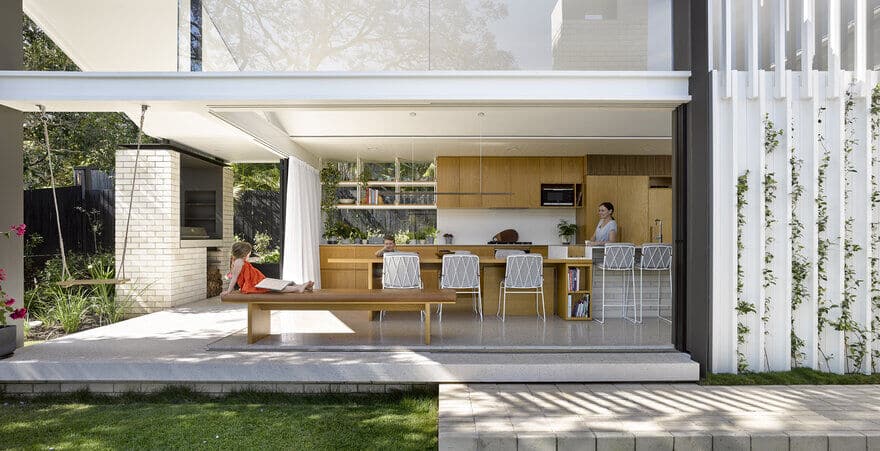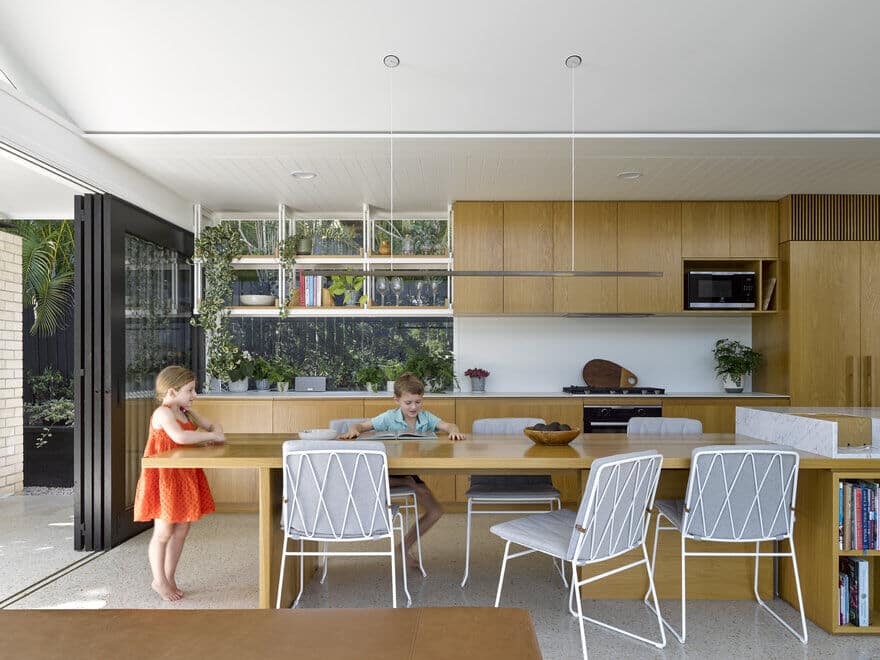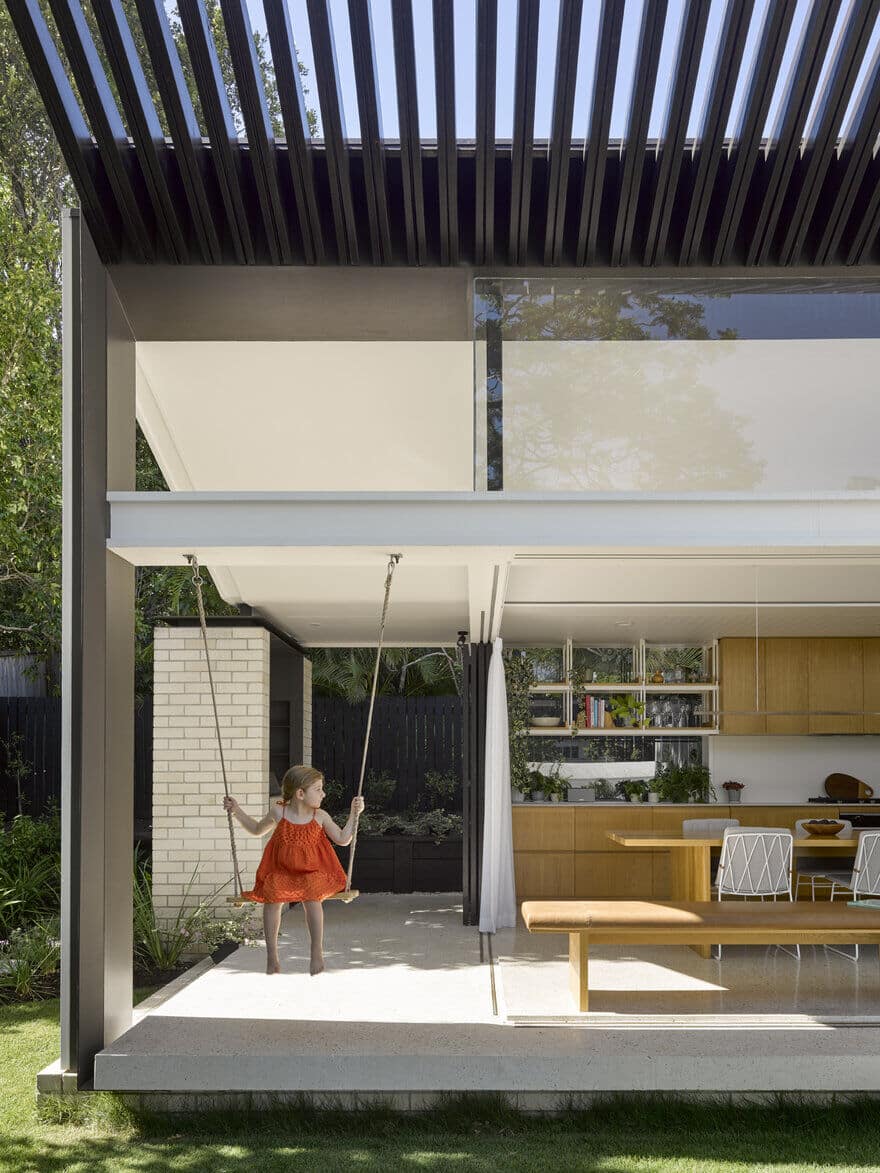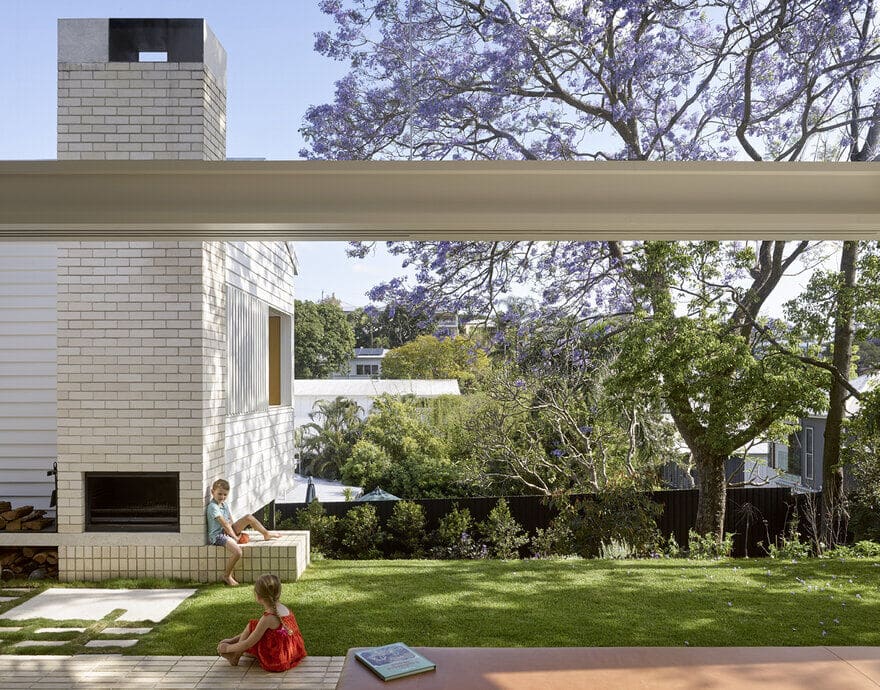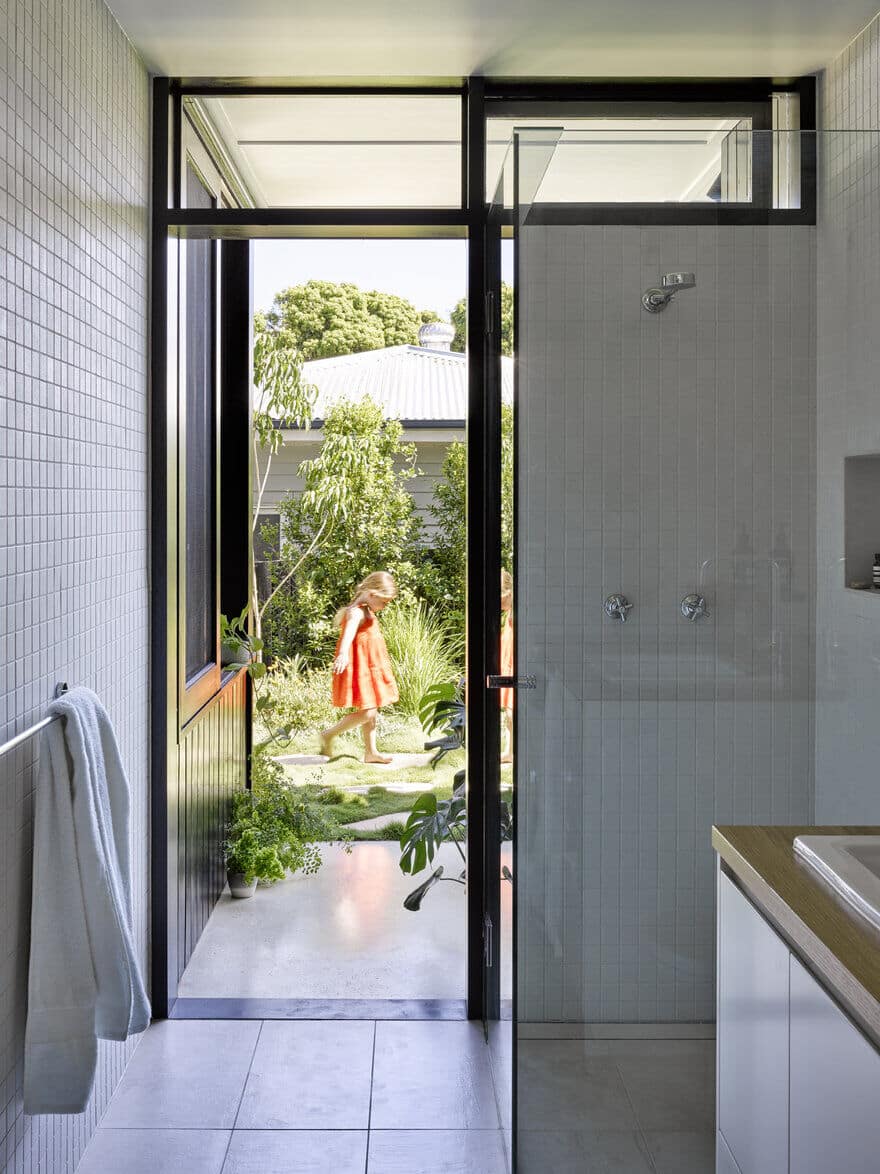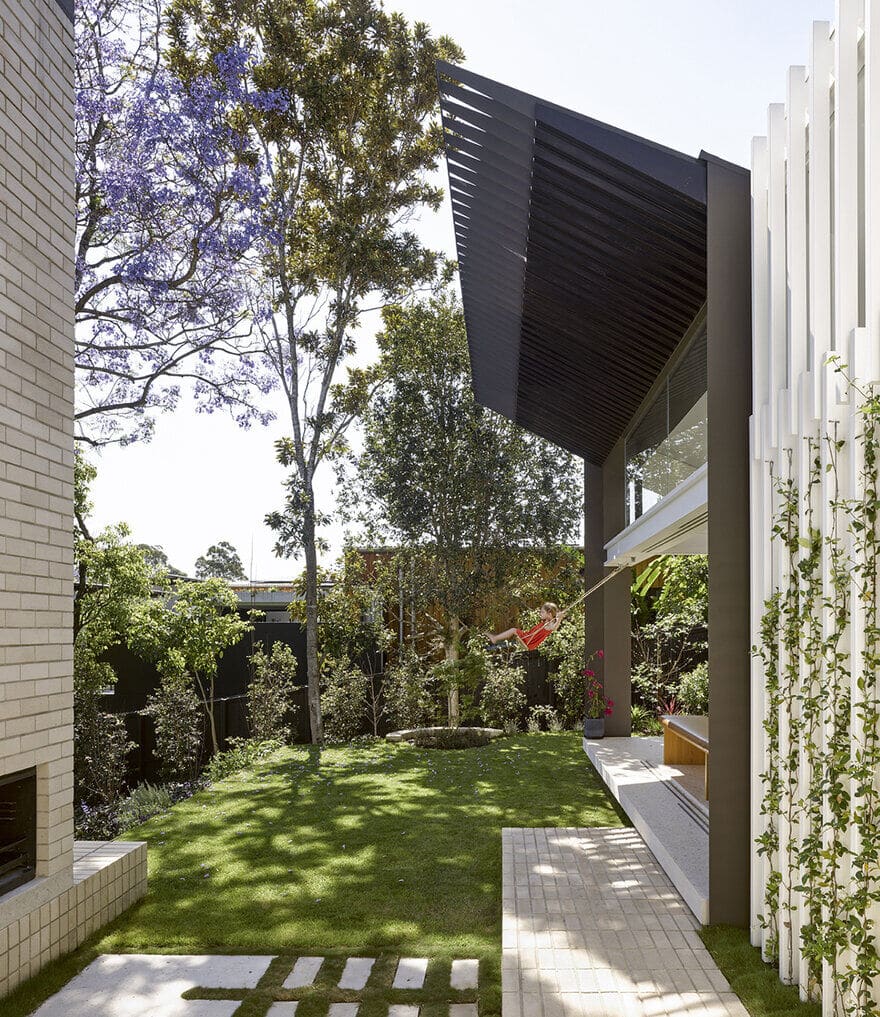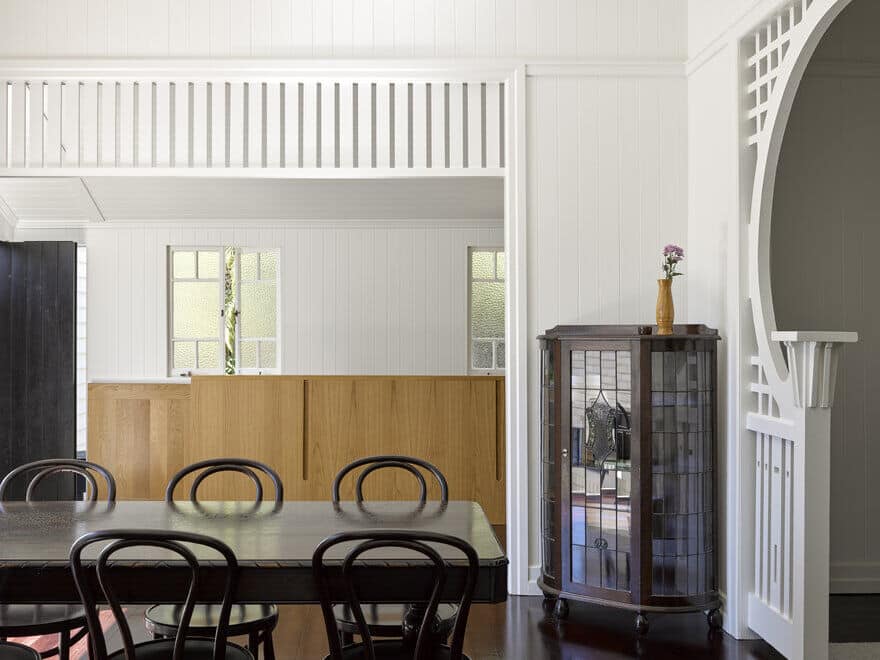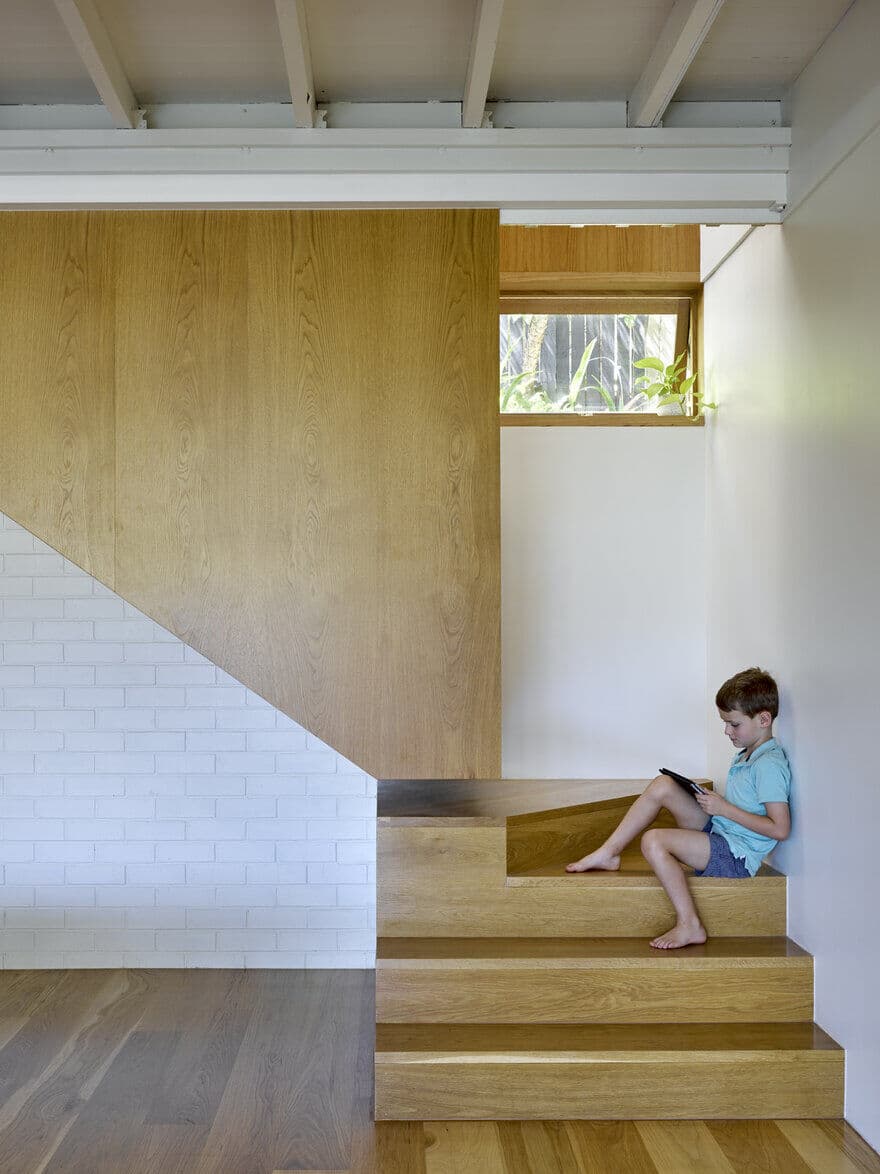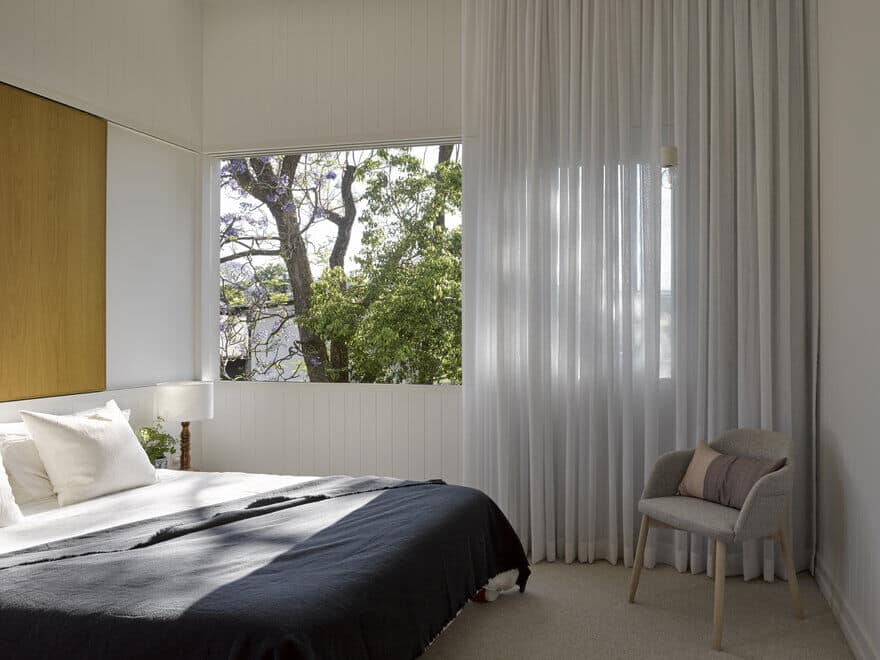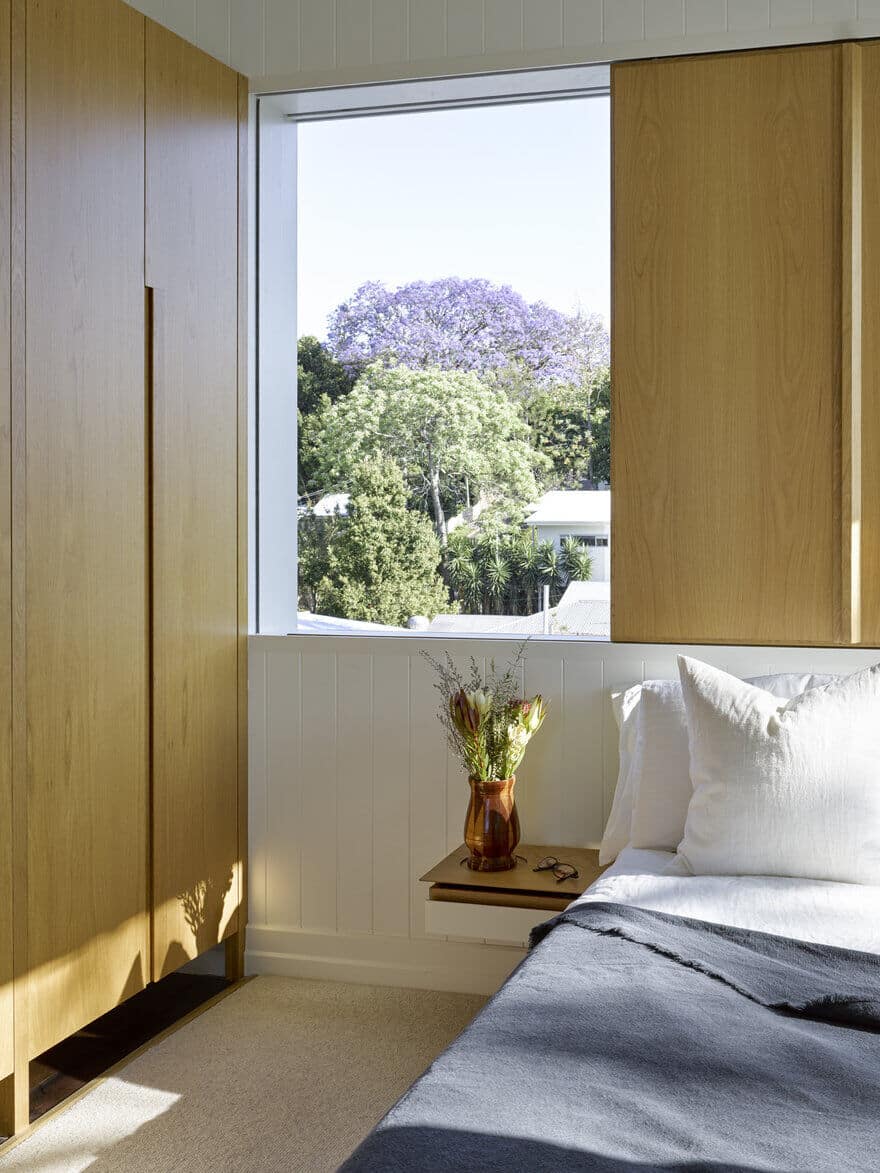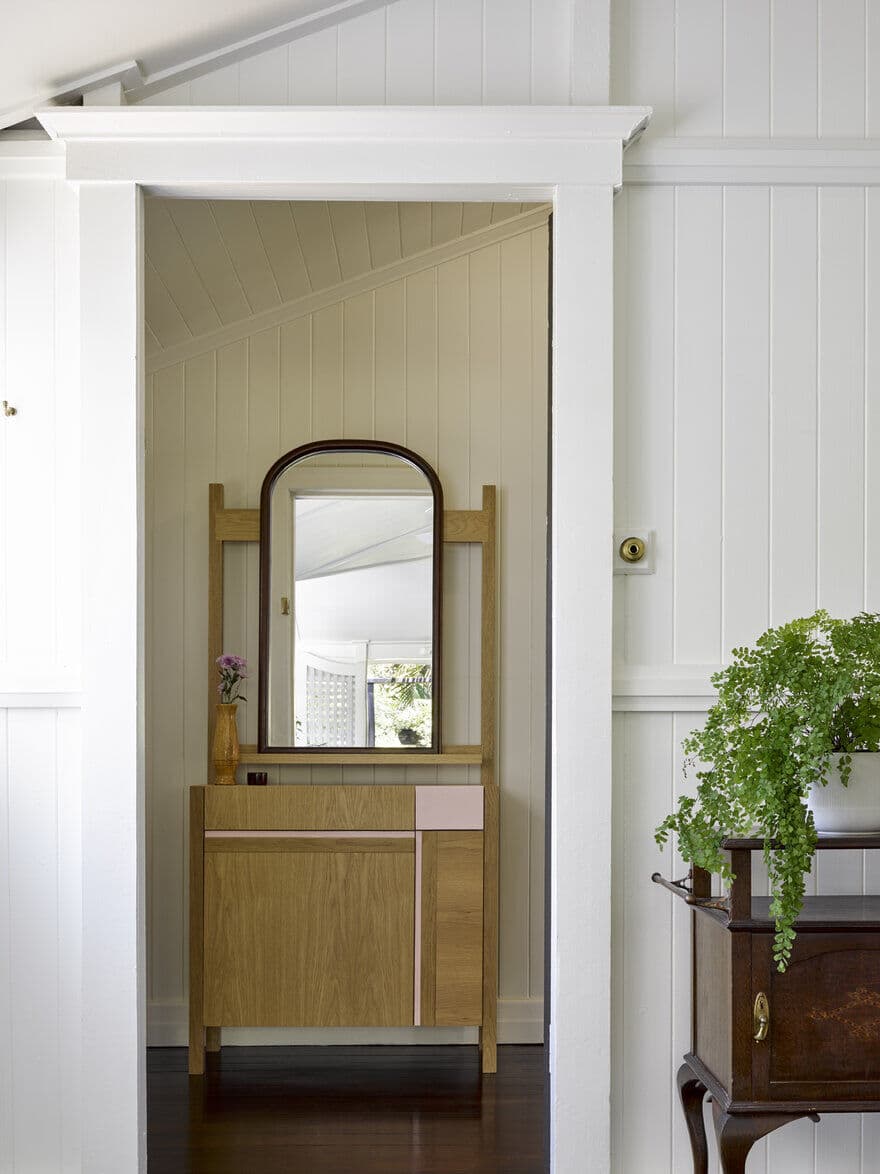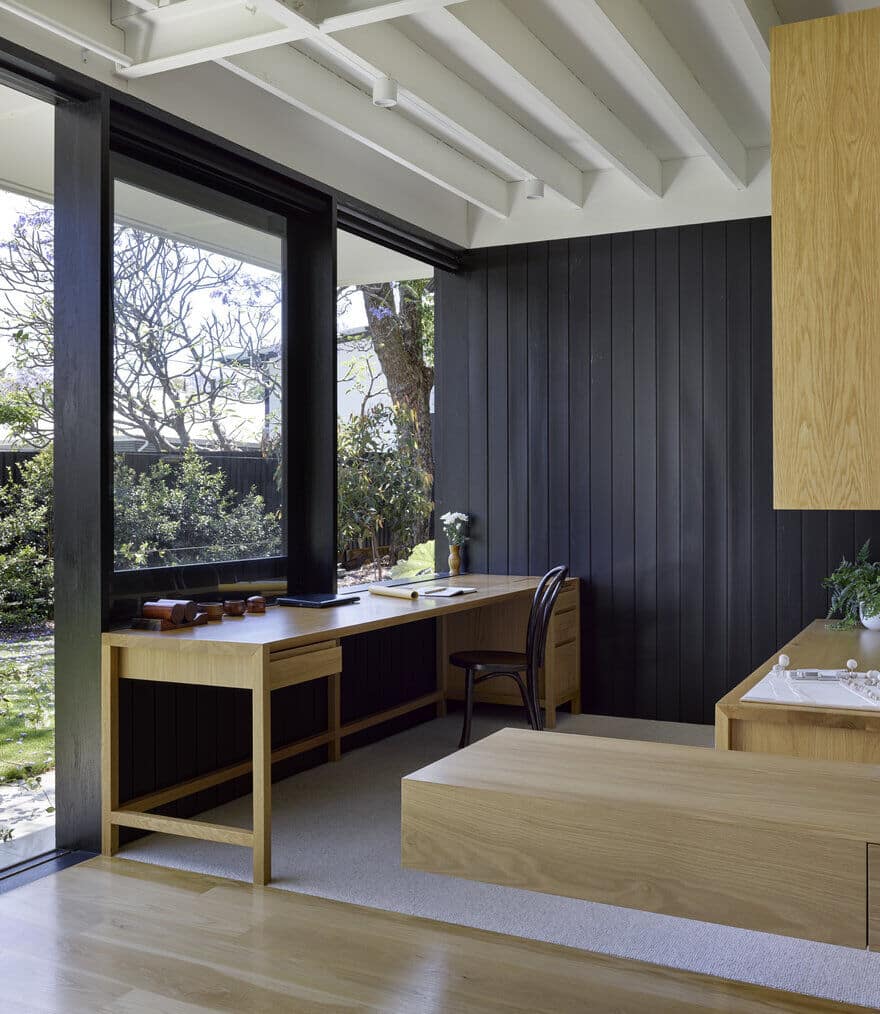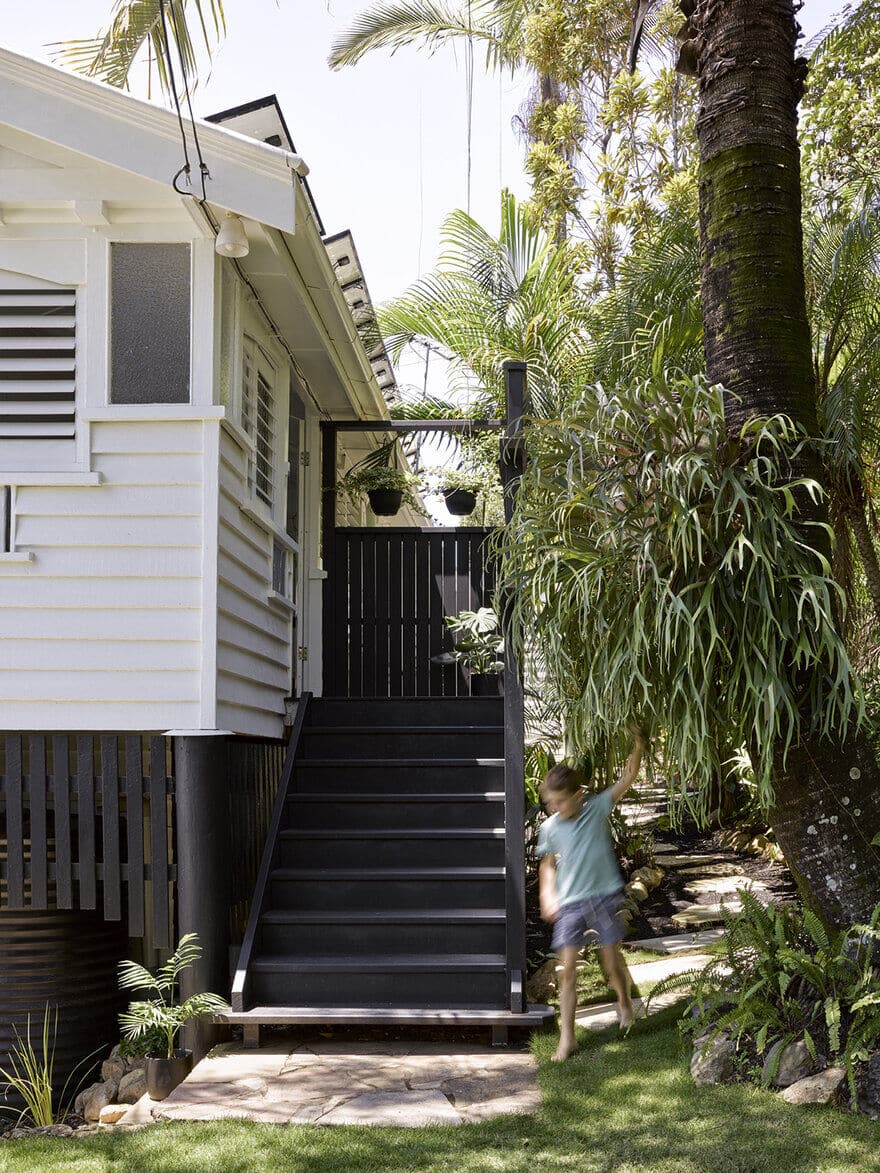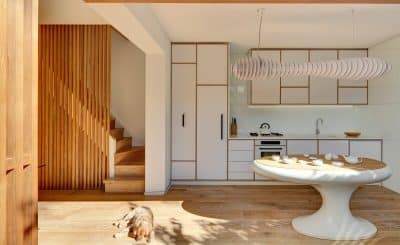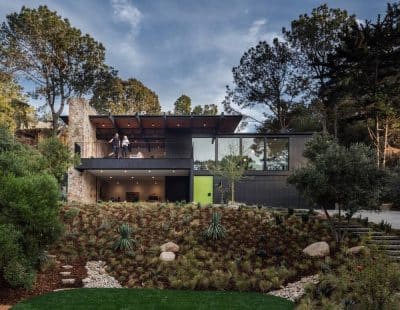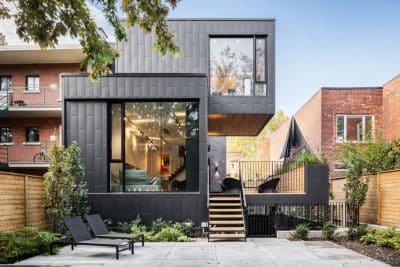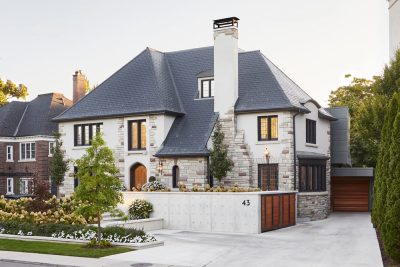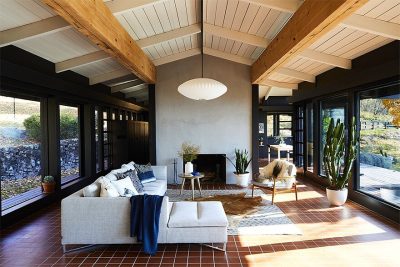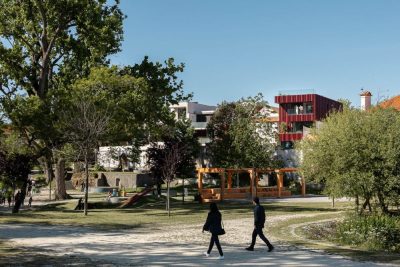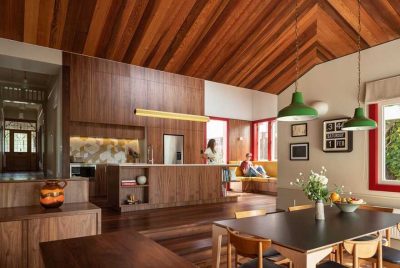Project: Ashgrovian House Renovation / Jacaranda House
Architects: SP Studio
Lead Architects: Scott Petherick
Design Team: Scott Petherick
Location: Paddington, Australia
Area 290.0 m2
Project Year 2017
Photographer: Christopher Frederick Jones
The brief for the Jacaranda residence was to turn an original 1920’s Ashgrovian house into a family haven, with the flexibility to accommodate the changing needs over the next 20 years. All core family living spaces needed to be on a single level, on a modest, intimate scale, while a separate zone was required for my architectural studio. Remaining authentic to the core of the building, and the inherent elegance of the Queenslander, was critical. This meant picking up on the traditional Queenslander language of expressing the construction method, and featuring beautiful timber work.
In responding to the brief, the first challenge and opportunity was to play with the vertical space available on the sloping block. By carving into the hill beneath the house, two planes of living were created. Below – an architectural studio and workshop, tranquil and constantly cooled by the thermal mass of rock and earth encasing it. Above – a breezy Queenslander, open to all cross-breezes and encompassing all of the spaces required for daily family living. Both planes spill onto lush green lawns and gardens, with a series of green terraces, extruded from the studio level, stitching the planes together.
On the upper level, the key addition to the original house was the family kitchen, which plays on – and in fact replaces – the Queenslander idea of a generous deck. From entering the house, it is the last room on this level to be revealed – something of a finale and a clear contemporary addition. Large timber sliding doors retract almost fully on two sides to form an external kitchen garden pavilion. Transitions between new, old, indoor and outdoor are seamlessly woven together through both materiality (brick, timber and concrete) and a consistent language of horizontal planes, that continues the play on vertical space and enables the addition to sit lightly in its sloping, hillside context.
Large eves are an essential feature of any Queenslander, but often reduce sightlines and natural light in central living spaces. In the Jacaranda House kitchen, the traditional downward sloping eve is replaced with a filigree, upward-sloping, battened eve. In partnership with the giant Jacaranda that encases the garden, the eve achieves a beautiful filter of sunlight into the kitchen, creating a gentle, ever-changing pattern of light and shade in this ‘garden kitchen’.
To balance with the openness of the garden/Jacaranda outlook at the east end of the kitchen, the master bedroom has been pushed slightly out from the original floor plan, creating an intimate courtyard at the south end of the kitchen. The court yard is activated by a gestural external fireplace, that brings foreground drama to the kitchen outlook, while creating an external wall to complete the ‘garden room’.
The cumulative result is an understated re-interpretation of the traditional Queenslander, that extracts its unique strengths and distinctiveness from its challenging site context.

